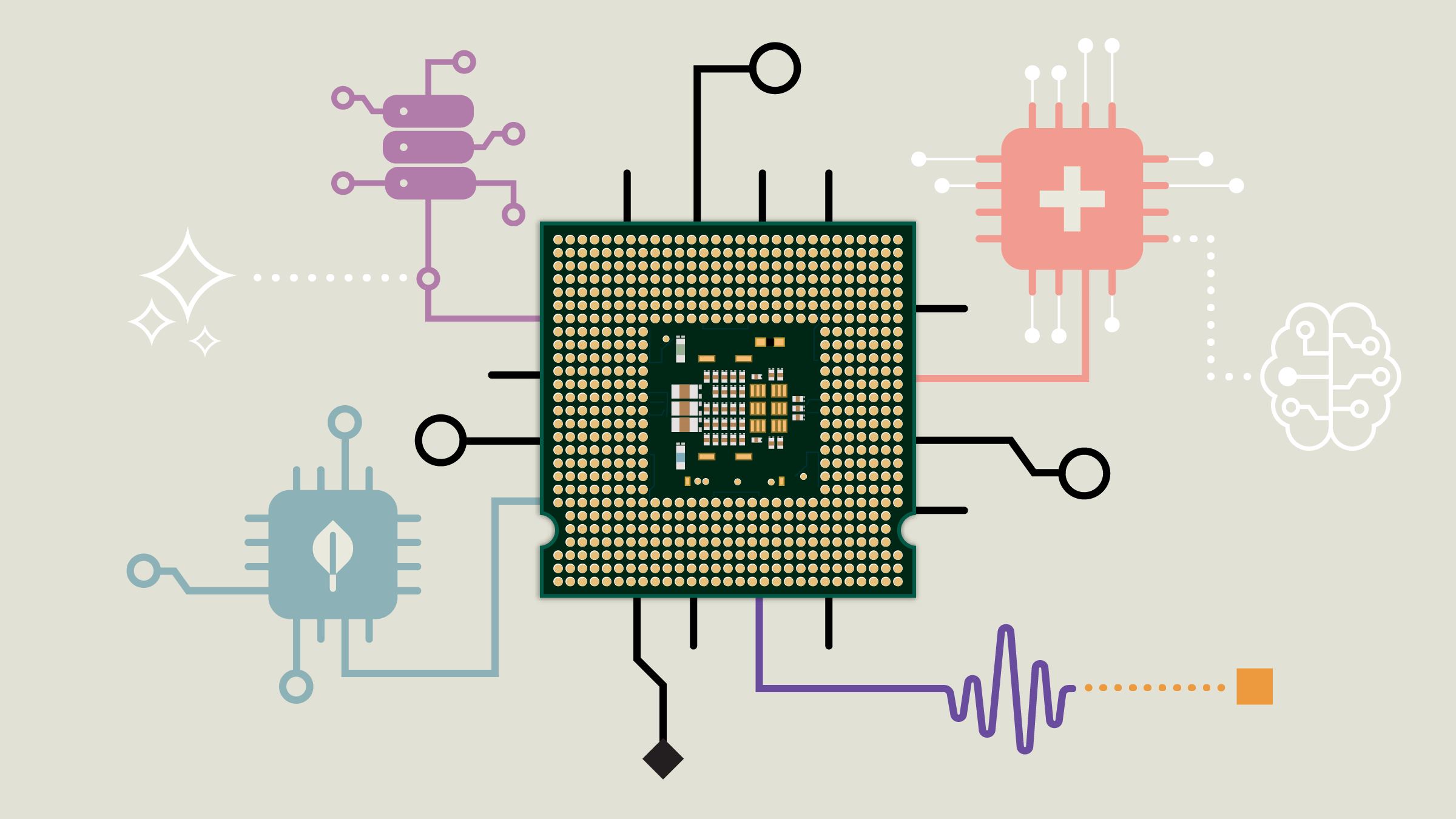Jeremy Glaser: For Morningstar, I'm Jeremy Glaser. I'm talking today with Matt Coffina. He is the editor of Morningstar StockInvestor. He recently took the helm of the Tortoise and Hare portfolios. We're going to talk a little bit about some recent moves that he has made.
Matt, thanks for talking with me today.
Matt Coffina: Thanks for having me, Jeremy.
Glaser: Matt, let's talk a little bit about your strategy. Can you describe the strategy of these portfolios in a nutshell?
Coffina: Sure. StockInvestor has always followed the same consistent strategy, which is that we buy preferably wide-moat companies--in some cases we'll buy a narrow-moat company--but companies with strong competitive advantages trading at a discount to their intrinsic value. So, we look for companies with low price/fair value ratios.
Glaser: You've made some recent moves. Let's take a look at some of those and see how it fits into that strategy. When it comes to finding wide moats, are there cases when you find opportunities to upgrade the moats in your portfolio? How do you evaluate when it's time to make those upgrades?
Coffina: Well, it's a challenging environment right now. We actually have two wide-moat companies [with Morningstar Ratings for stocks of 5 stars] in our entire coverage universe. Those are Western Union and National Oilwell Varco, both of which were already in Hare portfolio when I took over. I did recently add to our National Oilwell Varco position.
Another wide-moat company that's not quite at the 5-star level, but that I currently like a lot is Express Scripts. This is a company that was formerly on my coverage list [as a health-care equity analyst]. It completed the acquisition of Medco last year, which really strengthened the competitive advantage in my view. They now control about one third of pharmaceuticals spending in the United States, which gives them a lot of bargaining power over drug manufacturers, retailers, distributors, and so on.
Glaser: If those are some wide-moat names you like right now, were there some other names that maybe weren't wide moat that you were less excited about?
Coffina: Yes. So, I've also been selling some narrow-moat companies from the portfolio, particularly if the competitive advantage has weakened since StockInvestor first invested [in the company]. Some examples would be St. Joe. That was a company that owns a lot of real estate in Florida. We thought it was a wide-moat company back when we bought it, but our more recent assessment is that it's more of a narrow-moat company.
Another example of a company that recently got downgraded was International Speedway. This is a company where we always thought of it as competing with other potential racetracks for NASCAR races. When you define the market in that way, International Speedway clearly has a wide moat. It would be almost impossible to build another track in International Speedway's markets and get a NASCAR race to go to your track.
However, if we think of International Speedway as being part of the much broader category of the recreational activities, that's pretty much as competitive as a market gets. And in fact, International Speedway has seen declining popularity since 2007 or so, unfortunately, right around the time that we bought this stock. Not only is attendance down at the racetracks--and that could be just a sign of the poor economy or NASCAR's core consumer, in particular, being squeezed--but TV ratings have also been stumbling. So, it doesn't seem to be just an economic issue. If it were just an economic issue, you would expect people who couldn't go to the track to stay home and watch the race on TV and that really hasn't been happening.
Glaser: You just described some declines in competitive advantages. How do you think about emerging moats then, companies that you think might be seeing their moat widen?
Coffina: Definitely something I want to emphasize in the portfolios and in the Hare, in particular, is companies with positive moat trends, which are companies that are strengthening their competitive advantages over time. Some recent additions to the portfolio in this category would include Baidu. Baidu is a search engine in China, basically the Google of China, and we think that its competitive advantage is getting stronger over time as more people use this service. The site is collecting more and more data, which it can use to surface more relevant content to users and also more relevant ads, which helps the advertising space to be more valuable.
Another example would be Charles Schwab. This is a company that benefits from scale, which is improving as they've been gathering a lot of assets and improving their cost position. And they also have relatively sticky customers, and those customers are only getting more sticky, as they adopt more and more products from Schwab. So, brokerage customers that are starting to be Schwab mutual fund customers are using Schwab's managed products and so on.
Glaser: What else do you look at? You're looking at moat; you're looking at valuation. How about things like stewardship? Does that factor into your buy and sell decisions?
Coffina: Yes, so stewardship is another thing that I want to emphasize going forward. The Hare actually had two companies in it with poor stewardship when I took over. Those would be CEMEX and Vulcan Materials. These were both similar stories where the management team made a very aggressive leveraged acquisition right before the peak of the construction market. Since then, we have seen a lot of declines in construction activity, and those acquisitions turned out to be very poorly timed. So CEMEX is one company that I recently sold. It actually fits into a lot of these categories. It had a narrow moat, a negative moat trend, and poor stewardship, and it was also trading pretty close to our fair value estimate. That's the kind of company I would consider outside of our investable universe right now.
A company that I recently purchased would be C.H. Robinson. That is a company in the third-party logistics business. We think it has exemplary stewardship. The company has been gaining market share for decades. It's a situation that's really network-affected work, so [the firm] has more relationships with other trucking companies and a lot of relationships with customers. And the more of both sides that it has, the more value it can bring to both sides of the equation.
Glaser: Valuations are pretty full right now. You mentioned a few stocks that you think look somewhat undervalued. But how are you thinking about potentially trimming some of the gains that you may have seen in the portfolio or how much cash you want to hold? How do you navigate this environment when there just aren't that many cheap stocks?
Coffina: Well, it's difficult. One thing I've been doing has been selling some of the more overvalued or fully valued names in the portfolios, and names where the story has sort of already played out. An example would be Procter & Gamble; that's a company that was trading for about a 16% premium to our fair value estimate when I sold. It also has a negative moat trend, as we are finding that they're having a harder and harder time raising prices without losing market share. So it seemed like a fully valued stock, and so I was able to swap that one for C.H. Robinson trading at a 21% discount at fair value.
Another example would be Facebook. The Hare was up 35%-plus on our Facebook position. We bought it at around $20, and it was an oversized position in the portfolio, about a 7% weighting. In that case, the stock is still trading below our fair value estimate, but the valuation doesn't look cheap enough to keep it at such a high portfolio weighting, and I cut the position in half to about 3.5%.
Glaser: So how do you think about your cash holdings then?
Coffina: So I've been raising a little bit of cash in the Hare. The Tortoise already had a pretty robust cash position, north of 6% when I took over. The Hare only had about 50 basis points of cash, and that's sitting closer to 5% now. The market is fully valued, but at the same time I think that there are a lot worse things out there than a fairly valued stock, particularly given the alternatives of cash and bonds. I'd rather own a fairly valued stock than either of those alternatives for the most part. That said, I think it's a good time to have at least a little cash on hand. For me, that's in the 5% range, just in case better opportunities do come up further down the line.
Glaser: Matt, thanks for your thoughts today.
Coffina: Thanks for having me, Jeremy.
Glaser: For Morningstar, I am Jeremy Glaser.
























